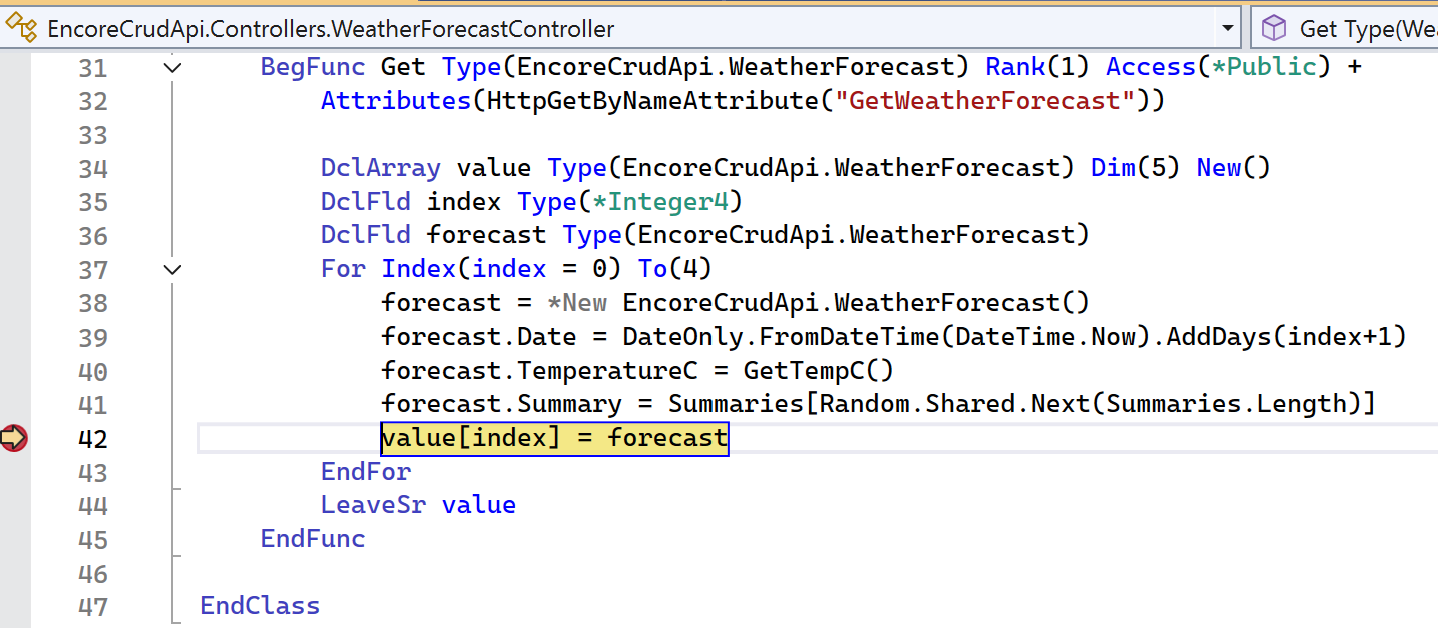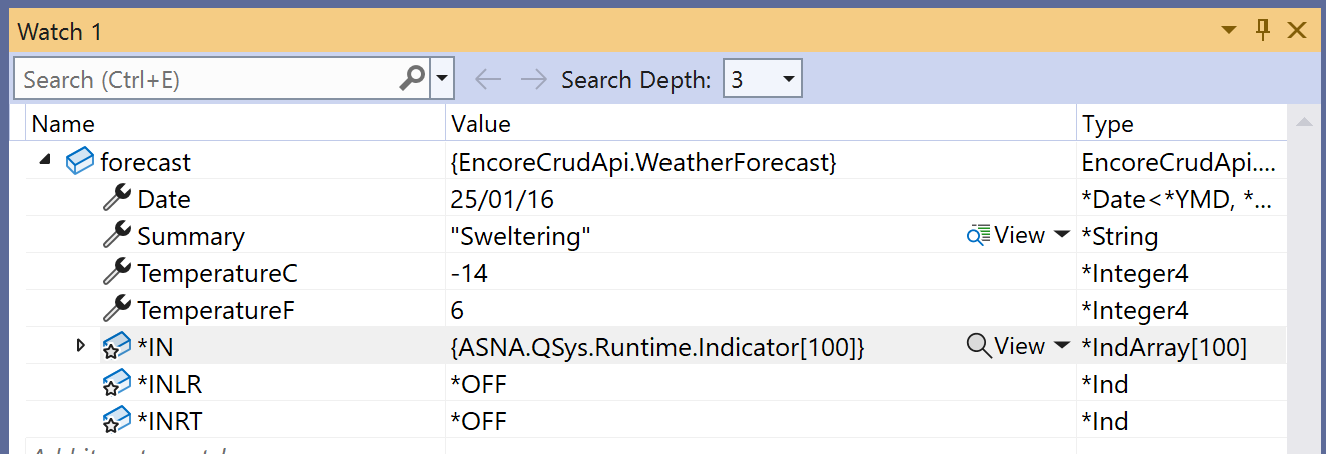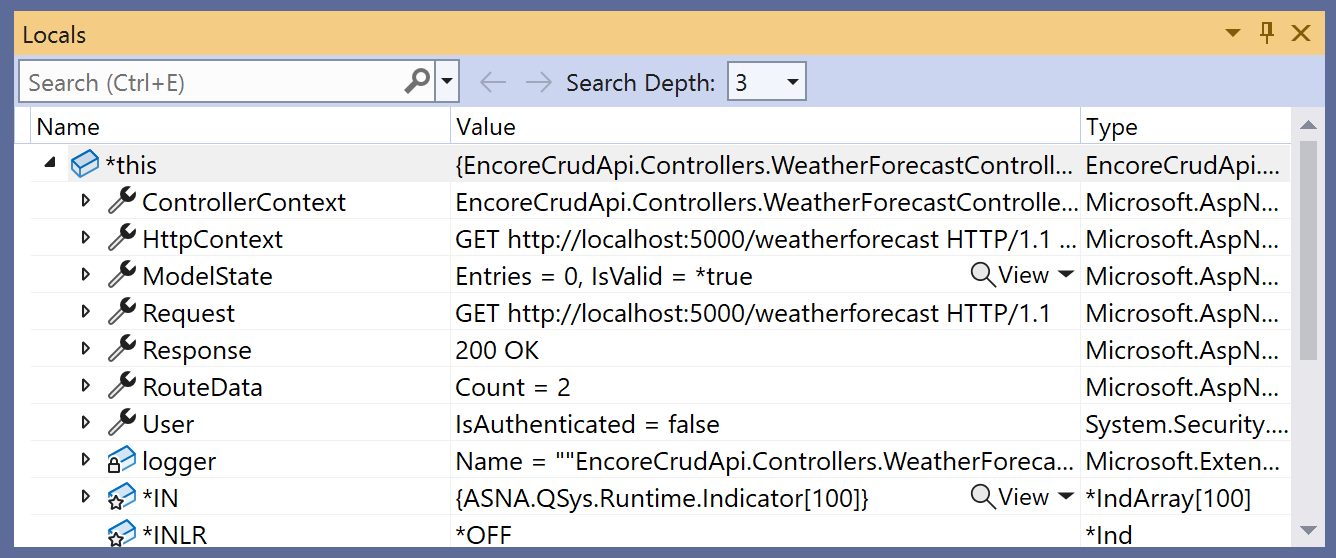Inspect Variables and Program State
Estimated reading time: 3 minutes
Every installation of Visual Studio provides nearly two dozen tool windows to help analyze the state of .NET programs running in the debugger. Encore RPG for Visual Studio extends these with familiar Encore syntax in both the tools and the editor.
- View variable values, and in many cases modify them if desired.
- Most values and expressions use Encore syntax.
Example Class
In the walkthroughs of the following sections, we will use a simple Encore class that “models” a weather forecast (the logic in this example was borrowed from an ASP.NET Core template). The WeatherForecast object defines four simple properties as follows:
BegClass WeatherForecast Access(*Public)
DclProp Type(*Date) TimFmt(*YMD) Name(Date) Access(*Public)
DclProp Type(*Integer4) Name(TemperatureC) Access(*Public)
BegProp Like(TemperatureC) Name(TemperatureF) Access(*Public)
BegGet
LeaveSr 32 + (TemperatureC / 0.5556)
EndGet
EndProp
DclProp Type(*String) Name(Summary) Access(*Public)
EndClass
Watch Window Functions
In the example application, instances of WeatherForecast are created on-demand to build an array representing “5 day” weather predictions, using the following code running in the debugger. At line 42, the program will assign an array element with the value of the forecast reference created in the preceding lines.

We could use the Watch window to monitor the creation of WeatherForecast objects in the code above. Or, if we just want a quick summary view of the forecast value, we can hover the mouse cursor over a code reference to the variable, and let the editor’s IntelliSense® features do the job:

Encore class objects implicitly define indicator members
*IN. Also, note that the value forDateis shown in the *YMD format defined by the property declaration inWeatherForecast.
Now, right-click on a forecast reference in the code, and select the Add Watch… command. A similar display is shown in the Watch window tool, which includes a Search box useful for finding certain members or values in complex objects. You can optionally type in forecast in the last row of the Watch window to with the same effect:

Most syntactic elements can be observed in watch windows, including member variables, arrays, and in some cases simple method calls.
Values in watch window displays are only valid when the debugger is stopped on a breakpoint.
Locals Window
The Locals window provides similar capabilities as the Watch window. However, the only variables shown by Locals are the local “automatic” variables in the scope of the current code. Member variables are excluded by Locals, when in a member method, the *this reference can be accessed:

Additional Information
Find out about the new Language Concepts when using Encore RPG.
Describes the Encore RPG programming language reference.
Getting Started with Visual Studio
Learn to code in Visual Studio
IntelliSense® is a registered trademark of Microsoft Corp.